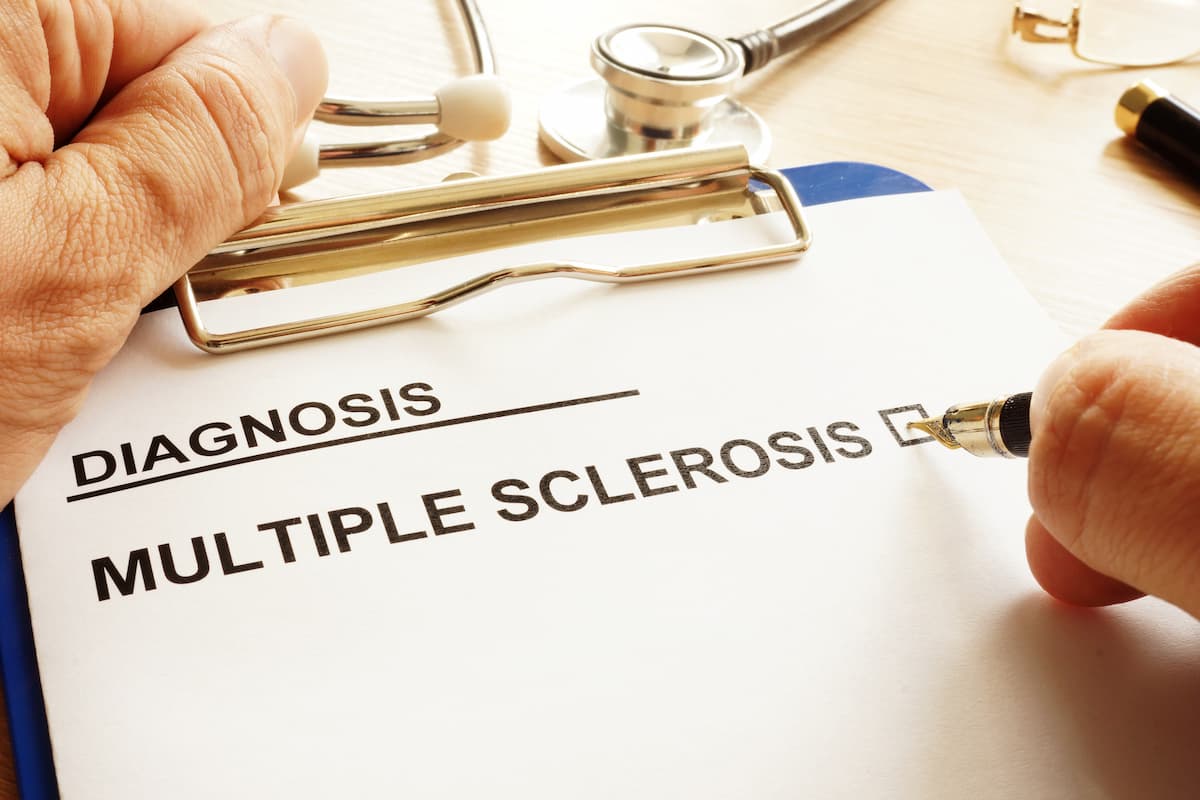News
Article
Pain May Be Indicator of MS Prior to Disease Onset: Study
Author(s):
Key Takeaways
- Pain may be an early symptom of MS, with increased gabapentinoid and anticonvulsant prescriptions seen in the years before disease onset.
- Patients with MS showed higher odds of filling prescriptions compared with controls, particularly for gabapentinoids.
Compared with healthy controls, patients with multiple sclerosis (MS) had higher odds of filling prescriptions for gabapentinoids and other anticonvulsants in the 5 years prior to MS onset.
Pain may be a prodromal symptom of multiple sclerosis (MS), appearing years before onset of disease, suggest study findings.1 The study, published in Multiple Sclerosis and Related Disorders, showed that in the 5 years prior to the onset of MS, patients more often filled prescriptions for gabapentinoids and other anticonvulsants than healthy controls.
“Therefore, greater prescription dispensation among cases may partly stem from gabapentinoids being prescribed for other neuropathic pain and/or other pain types, further suggesting that pain is a prominent feature of pre-onset MS,” explained the researchers of the study.
Patients with MS had higher odds of filling prescriptions for anticonvulsants and higher odds of filling gabapentinoids and gabapentinoids without other anticonvulsants in the years leading up to onset of MS. | Image credit: Vitalii Vodolazskyi - stock.adobe.com

Previous research has linked pre-onset MS with higher prescription use, including one study that showed notably higher prescriptions for antivertigo preparations, antiepileptics, glucocorticoids, urinary antispasmodics, and muscle relaxants in the 5 years leading up to their first claim for demyelination.2
Adding to the literature, this new study included nearly 4900 patients with MS as well as over 22,000 healthy controls. Cases of MS were considered for patients with at least 3 MS-specific providers and/or hospital claim and/or at least 1 prescription for a disease-modifying drug. Three-fourths of patients included in the study were female, and ages ranged from under 20 to over 50 years.
Compared with controls, patients with MS had a 3-fold higher odds of filling prescriptions for anticonvulsants (adjusted odds ratio [aOR], 3.1; 95% CI, 2.8-3.4) and 4-fold higher odds of filling gabapentinoids (aOR, 4.1; 95% CI, 3.6-4.6) and gabapentinoids without other anticonvulsants (aOR, 3.9; 95% CI, 3.4-4.5) in the years leading up to onset of MS. Odds were adjusted for age, sex, epilepsy, post-herpetic neuralgia, diabetic neuropathy, and fibromyalgia.
The likelihood of filling prescriptions for gabapentinoids without other anticonvulsants, compared with controls, was higher among patients with MS during each year prior to their disease onset, with aOR increasing from 2.4 (95% CI, 1.7-3.4) 5 years prior to 5.9 (95% CI, 4.9-6.9) in the year prior.
Stratified analyses showed varying ORs of prescriptions across different groups of patients with MS, including by sex, epilepsy, age, and post-herpetic neuralgia.
For example, compared with controls, males with MS had higher odds than females with MS for filling at least 1 prescription for an anticonvulsant (aOR, 3.7 [95% CI, 3.1-4.4] and aOR, 2.9 [95% CI, 2.6-3.2], respectively). According to the researchers, the lower aOR observed among females compared with males may be explained by previous data showing a higher pain prevalence among females in the general population.3
Odds of anticonvulsant prescriptions were also higher, compared with controls, for patients with MS without epilepsy than patients with the condition (aOR 3.3 [95% CI, 2.9-3.6] and aOR 1.2 [95% CI, 1.0-1.7], respectively). Similarly, odds of gabapentinoid prescriptions versus controls was 0.1 (95% CI, 0.01-0.8) for patients with MS with post-herpetic neuralgia and 4.1 (95% CI, 3.7-4.7) for patients without. These findings, explained the researchers, were likely due to increased chances of any patient with epilepsy or post-herpetic neuralgia receiving such prescriptions.
Among patients with MS, the aOR of filling at least 1 prescription for a gabapentinoid without another anticonvulsant, compared with controls, was 5.6 (95% CI, 3.3-9.6) for patients aged under 30 years, was 4.1 (95% CI, 3.3-4.9) for patients aged between 30 and 50 years, and was 3.9 (95% CI, 3.4-4.7) for patients aged over 50 years.
Data showed effect modifications by sex (P = .02) and epilepsy (P < .0001) for anticonvulsants and by age (P = .03) and post-herpetic neuralgia (P = .009) for gabapentinoids without anticonvulsants. Effect modification was also observed by post-herpetic neuralgia (P = .02) for gabapentinoids.
“Unmeasured comorbidities, health behaviors, other off-label gabapentinoid uses (e.g. restless legs, bipolar disorder, anxiety), and regional prescribing differences emphasize the need for further region-specific research,” described the group.
References
- Bergeron-Vitez H, Yusuf FLA, Zhu F, et al. Anticonvulsant and gabapentinoids pharmacotherapy in the multiple sclerosis prodrome: A population-based matched cohort study. Mult Scler Relat Disord. Published online November 16, 2024. doi:10.1016/j.msard.2024.106167
- Zhao Y, Wijnands JMA, Högg T, et al. Interrogation of the multiple sclerosis prodrome using high-dimensional health data. Neuroepidemiology. 2020;54(2):140-147. doi:10.1159/000505331
- VanDerKerkhof EG, Mann EG, Torrance N, Smith BH, Johnson A, Gilron I. An epidemiological study of neuropathic pain symptoms in Canadian adults. Pain Res Manag. Published online March 30, 2016. doi:10.1155/2016/9815750




